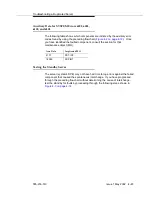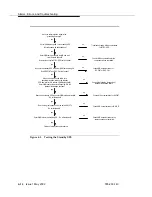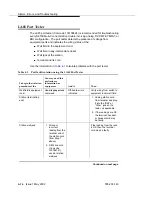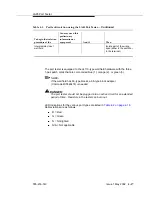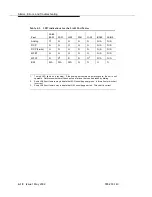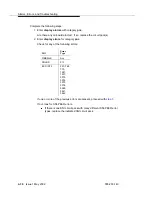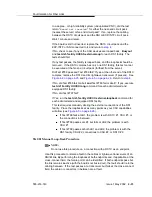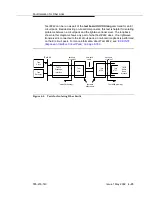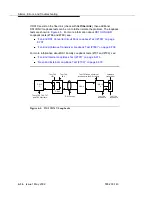
Troubleshooting a Duplicated Server
Issue 1 May 2002
4-11
555-233-143
Determining the Time of a Spontaneous
Interchange
There are two ways to tell at what time a spontaneous interchange has taken
place:
■
Display initcauses
The display initcauses command displays a record of every system reset.
In the following example, a spontaneous interchange into Server B took
place at 2:53 p.m. The standby server (B) transitioned into active mode
with a WARM restart (reset level 1).
Examining the Alarm and Error Logs
The system may have had time to log alarms or errors against the fault that
caused the interchange. Proceed through the steps summarized in
Examine only major alarms with a timestamp near the time of interchange, and
whose carrier designation is the current standby server [the “switch processing
element” (SPE) interchanged out of]. Include any resolved alarms meeting this
description.
Cause
Action
Escalated
Carrier
Time
Interchange
1
no
1B
11/27
14:53
Summary of Contents for S8700 Series
Page 50: ...Maintenance Architecture 555 233 143 1 26 Issue 1 May 2002 ...
Page 74: ...Initialization and Recovery 555 233 143 3 12 Issue 1 May 2002 ...
Page 186: ...Alarms Errors and Troubleshooting 555 233 143 4 112 Issue 1 May 2002 ...
Page 232: ...Additional Maintenance Procedures 555 233 143 5 46 Issue 1 May 2002 ...
Page 635: ...status psa Issue 1 May 2002 7 379 555 233 143 status psa See status tti on page 7 406 ...
Page 722: ...Maintenance Commands 555 233 143 7 466 Issue 1 May 2002 ...

















